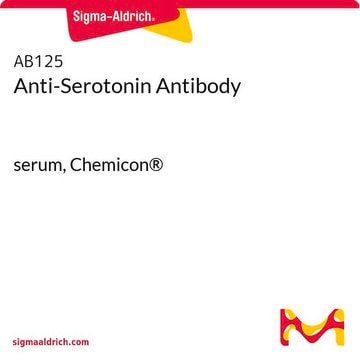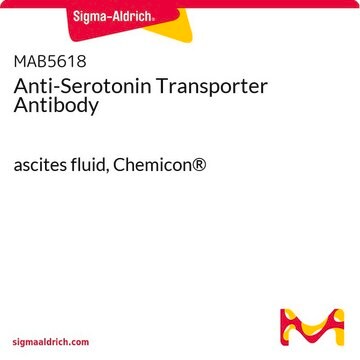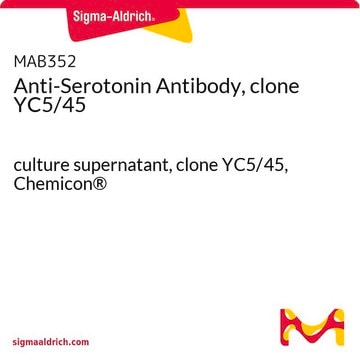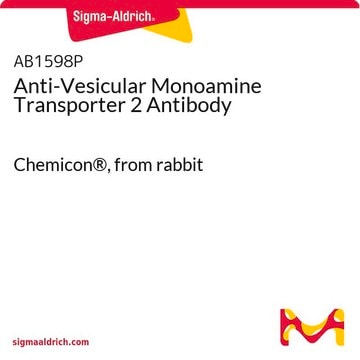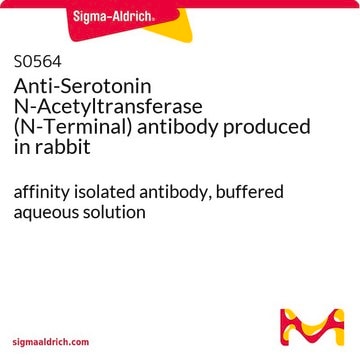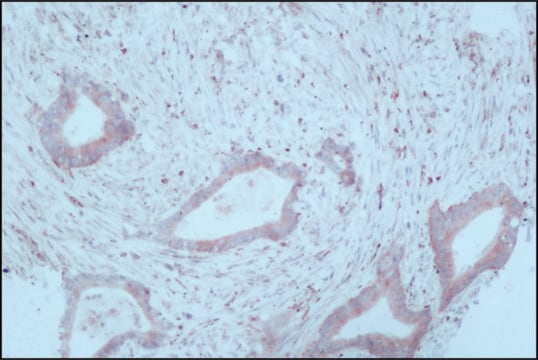S5545
Anti-Serotonin antibody produced in rabbit
whole antiserum
Synonym(s):
Anti-Serotonin, Rabbit Anti-Serotonin, Serotonin Detection Antibody
About This Item
Recommended Products
biological source
rabbit
Quality Level
conjugate
unconjugated
antibody form
whole antiserum
antibody product type
primary antibodies
clone
polyclonal
contains
15 mM sodium azide
species reactivity
rat, human
packaging
antibody small pack of 25 μL
technique(s)
immunohistochemistry (formalin-fixed, paraffin-embedded sections): 1:8,000 using sections of normal human appendix or serotonin-containing carcinoid tumors
immunohistochemistry (frozen sections): 1:5,000 using perfusion-fixed (4% paraformaldehyde), frozen sections of rat brain.
shipped in
dry ice
storage temp.
−20°C
target post-translational modification
unmodified
Gene Information
human ... HTR1A(3350)
General description
Specificity
Immunogen
Application
Biochem/physiol Actions
Physical form
Storage and Stability
Disclaimer
Not finding the right product?
Try our Product Selector Tool.
Storage Class Code
12 - Non Combustible Liquids
WGK
WGK 3
Flash Point(F)
Not applicable
Flash Point(C)
Not applicable
Certificates of Analysis (COA)
Search for Certificates of Analysis (COA) by entering the products Lot/Batch Number. Lot and Batch Numbers can be found on a product’s label following the words ‘Lot’ or ‘Batch’.
Already Own This Product?
Find documentation for the products that you have recently purchased in the Document Library.
Customers Also Viewed
Our team of scientists has experience in all areas of research including Life Science, Material Science, Chemical Synthesis, Chromatography, Analytical and many others.
Contact Technical Service